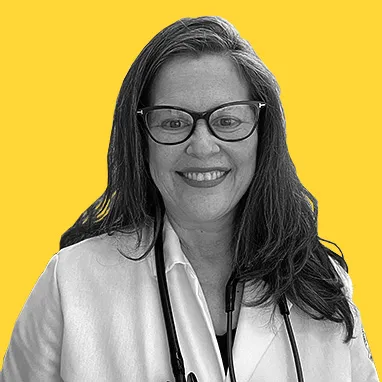Doctors suggest that the average woman between the ages of 45 and 54 should have a yearly breast cancer screening, even without signs of the disease. But if you notice symptoms of breast cancer, it’s important to see your doctor as soon as possible. Doctors are able to treat the disease better if they find it earlier.
Warning signs of breast cancer might include:
- A painless lump
- Lymph node swelling
- Pain in your breast
- A feeling of heaviness in your breast
- Swelling, redness, or thickening of your breast skin
- Changes in your nipple
- Nipple discharge (especially if it has blood in it)
- Breast scaliness
- Nipple retraction (when your nipple turns inward)
But sometimes, early breast cancer shows no symptoms. Therefore, it’s important to check your breasts routinely.
Women are more likely to get breast cancer, but some men are at risk too. The symptoms are similar in men and women. If you don’t have any symptoms but have a family history of breast cancer, you can ask your doctor about genetic testing. A genetic specialist can help anyone find out how likely they are to get this disease.
Who You’ll See
Schedule an appointment with your doctor if you have any breast cancer symptoms. You’ll have tests done at your regular doctor’s office, a clinic, or a hospital. First, you’ll most likely see your family doctor or gynecologist at your appointment. Based on the tests you need, you might also see a radiologist. These doctors use imaging tests to diagnose and treat conditions.
What to Expect
You may have one or more types of breast exams. Each test looks for signs of breast cancer:
Visual exam. Your doctor will look at how your breasts compare in size and shape and check to see if the skin shows any signs of cancer. They’ll also look at your nipples for any abnormal fluid. Your doctor might ask you to move your arms in different positions so that they can check your breasts more easily.
Manual exam. During this test, your doctor will use their hands to gently assess your entire breast, collarbone, and underarm area for lumps or defects. They’ll also check the lymph nodes near your breasts to make sure they’re not larger than normal.
Mammogram. This is an X-ray of your breast. A screening mammogram is a routine test for people with no noticeable symptoms. If that test shows something unusual or you have other breast cancer symptoms, you’ll have a diagnostic mammogram. These mammograms show a more detailed X-ray and help doctors look for signs of cancer. You might also need a diagnostic mammogram if you have breast implants.
Ultrasound. If your doctor finds a possible sign of breast cancer, they may order an ultrasound of your breast tissue. This test uses sound waves to scan your breast but doesn’t cause any harm to your tissue. An ultrasound will create a picture called a sonogram. This will give your doctor a detailed look at any larger lumps in your breasts.
MRI. If other tests aren’t able to find enough information, your doctor may suggest an MRI of your breast. This test uses magnetic energy and radio waves to scan your tissue. It creates a picture of specific areas in your breast. Your medical team will review these pictures to check for unusual tissue.
Biopsy. If you have a biopsy, your doctor will take out a bit of tissue or liquid from the potentially cancerous area of your breast. Doctors will then study the cells under a microscope to check for breast cancer. This is the only test that can confirm if an area is cancerous. The two most common types of biopsies used on breasts include a core-needle biopsy and a surgical biopsy. Your doctor may also use a fine-needle aspiration.
The Next Steps
After your exams, you’ll wait for your results. In the U.S., mammogram results are required to be sent within 30 days, but you’ll usually get them quicker.
The time it takes to get imaging test results varies based on the doctor. Sometimes, they’ll give you your results right after a test. But in other situations, your doctor may want to wait until your next in-person or over-the-phone appointment. Before your exams, always ask your doctor how long it’ll take to get the results.
Biopsy results may take several days since your doctor sends your breast tissue to a lab first. After your doctor gets the lab report, they’ll review it and share the results with you.
